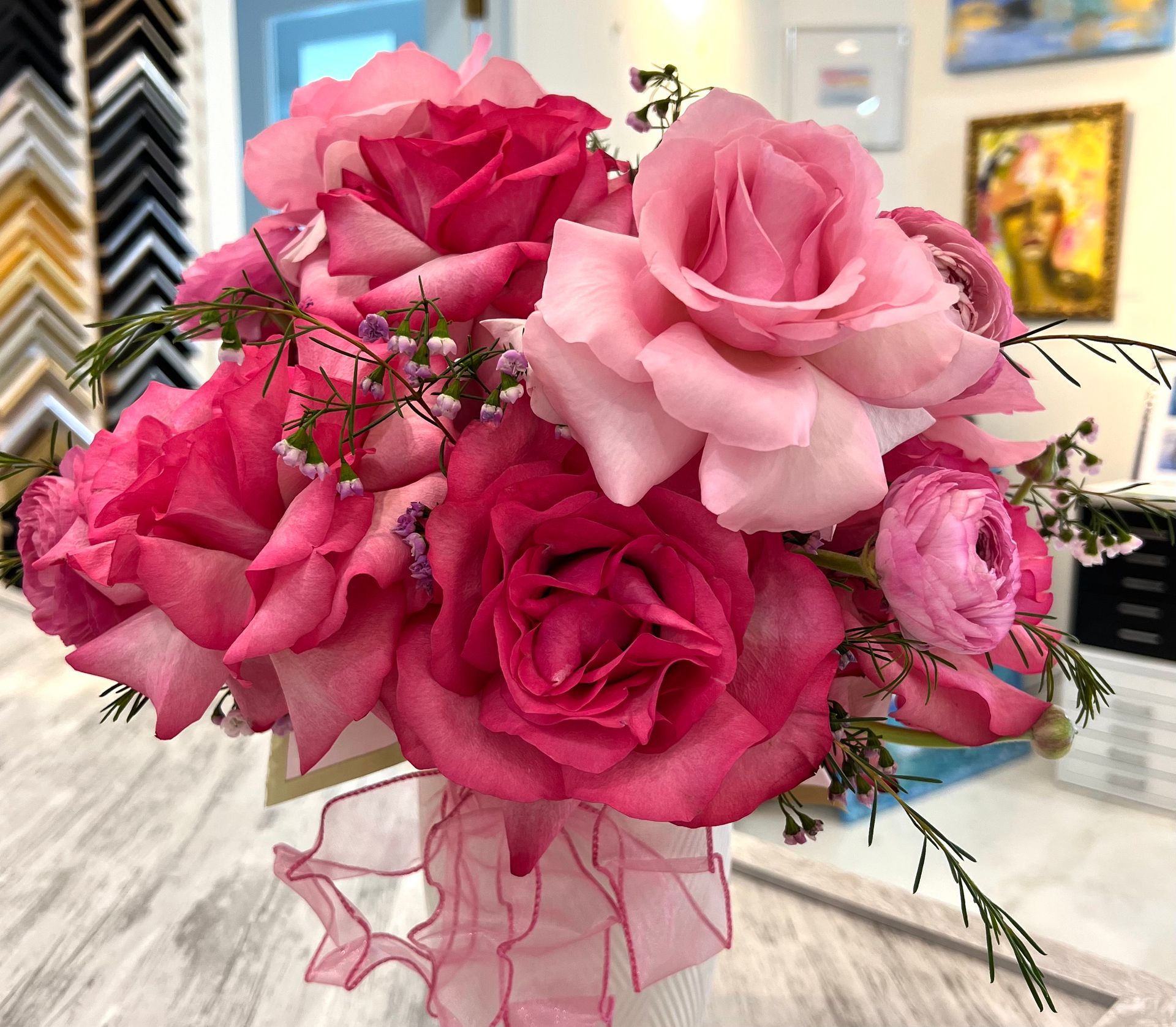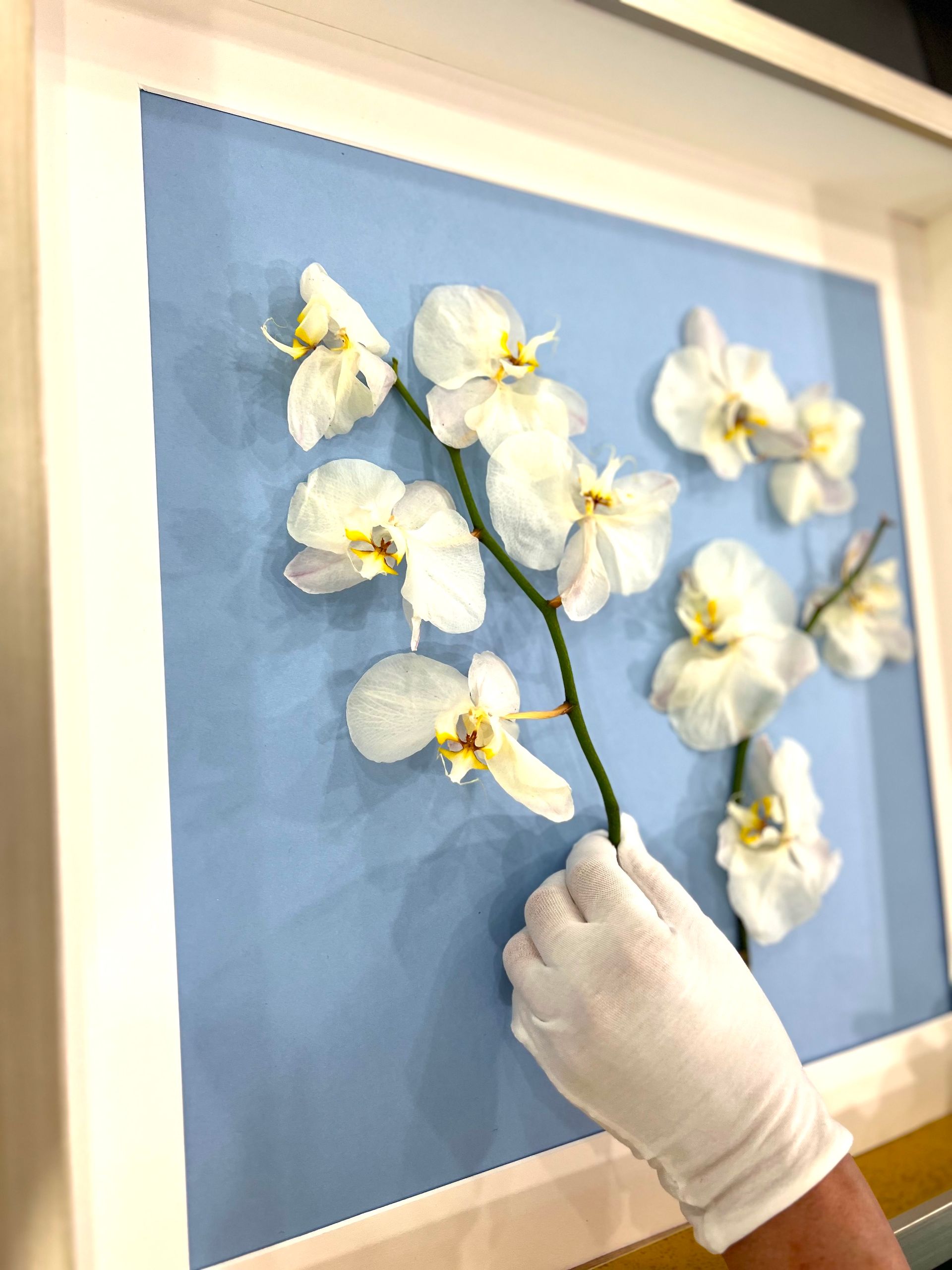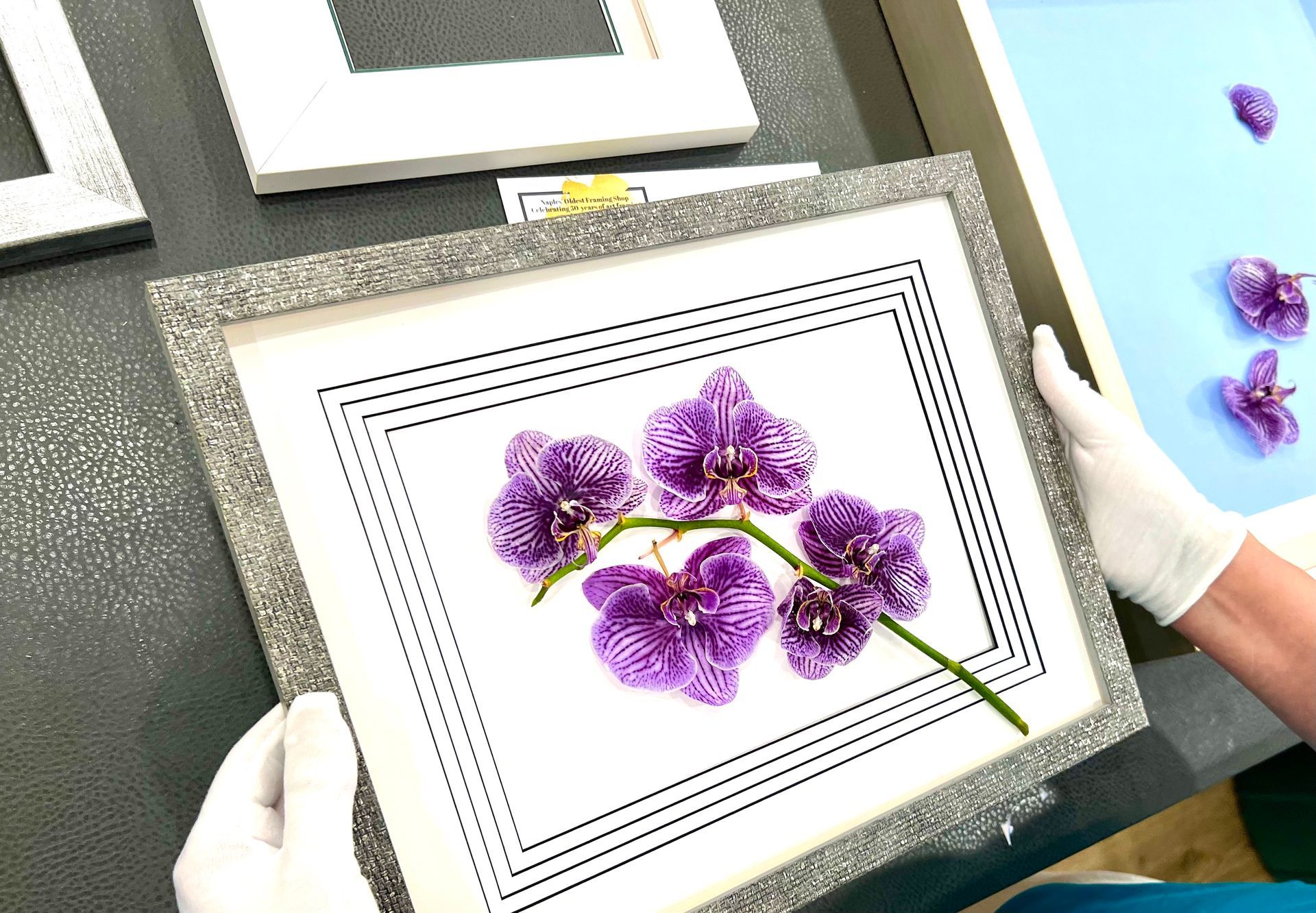Custom wedding bouquet preservation in Naples, FL

Wedding Bouquet Preservation in a Shadowbox — Step-by-Step Guide
(for Brides & Florists)
Preserving your wedding bouquet in a shadowbox is one of the most beautiful ways to keep that special day alive. Below is a complete, practical, client-friendly guide that explains every stage of the process, what to expect, and exactly how you can help make your bouquet look its best after preservation. This is written for brides, wedding planners, and boutique florists who want clear instructions and helpful recommendations.
What is a shadowbox preservation?
A shadowbox is a deep frame that preserves a bouquet in three dimensions — keeping petals, stems and textures visible while protecting them behind glass. Unlike flat pressing or resin encasement, a shadowbox preserves the bouquet’s original form and volume for display on a wall.
Useful search terms: shadowbox wedding bouquet preservation · preserve wedding bouquet · how to preserve wedding bouquet in shadowbox · pressed wedding bouquet framed · wedding bouquet preservation Naples FL.
Overview — The Full Process
- Receive & inspect bouquet (1–3 days after wedding)
- Choose preservation method (air-dry, silica, press, or hybrid)
- Drying & stabilization (2–3 weeks depending on method)
- Color touch-up & protective sealing (optional)
- Artistic mounting on archival backing (chosen background color/material)
- Framing in a deep shadowbox with museum glass
- Final inspection, care instructions, and pickup/delivery
Step 1 — Quick Delivery & Inspection (Client recommendation)
Why it matters: Flowers are freshest immediately after the wedding. The sooner we receive the bouquet, the better the result.
Client tips:
- Deliver your bouquet to the framer within 48–72 hours if possible. Keep it in cool, dry conditions (not refrigerated unless directed).
- If you must ship, use an express service and pack gently — notify the studio of the expected arrival time.
- Include any accent items you want in the shadowbox (ribbon, invitation, a small note).
What we do: Inspect for damage, remove excess moisture, and advise on the best preservation approach for your bouquet.
Step 2 — Choosing the Drying Method (and which to pick)
There are several preservation approaches — we’ll recommend the best method based on flowers and desired look.
Common methods:
- Silica gel drying: Best for maintaining 3D shape and color — great for roses, ranunculus, and delicate petals. (Time: 1–2 weeks)
- Air drying (hang dry): Simple, natural look — works for eucalyptus, lavender, and garden roses. (Time: 2–4 weeks)
- Pressing: Ideal if you prefer a flat, pressed composition in a shadowbox. Best for pansies, violas, anemones, and some roses.
- Hybrid / combination: Some arrangements use a mix — press delicate blooms and silica-dry voluminous ones.
Which flowers dry most beautifully:
- Excellent: Protea, strawflower, statice/limonium, eucalyptus (foliage), carnations, lavender, chamomile.
- Good (with care): Roses (choose garden or tea roses), ranunculus, orchids (if properly treated), hydrangea (needs special care).
- Tricky / less reliable: Peonies (very delicate, may lose fullness), tulips (warp), gardenias (very fragile).
- Tip: Strong-petaled, naturally long-lasting flowers and hardy foliage preserve best.
Step 3 — Drying & Stabilizing (in studio)
What happens: Flowers are dried using the chosen method. We monitor conditions, gently reshape petals, and stabilize stems. For 3D preservation we may use pins and archival adhesives to keep arrangement integrity.
Client expectations: Drying takes time — please allow 2–3 weeks for most bouquets. Complex pieces or very large bouquets may require more time.
Step 4 — Color Correction & Sealing (optional)
Why: Drying can slightly mute or shift colors. We offer gentle, archival-safe color touch-ups to restore vibrancy and an acrylic or sealing spray to reduce brittleness and petal loss.
Products used (professional choice): archival floral sprays, UV-resistant sealants, and neutral pH adhesives. We avoid strong solvents or non-archival sprays that can discolor over time.
Client note: If you want perfectly natural color, skip intensive recoloring; if you prefer a brighter look (especially for whites or pale tones), ask about color correction.
Step 5 — Artistic Mounting (collaboration with bride)
What we create: The artist arranges the preserved blooms on an acid-free backing in a chosen background (linen, colored paper, or fabric). This is where design choices matter — background color, mat style, and composition all affect the final look.
Client options:
- Choose background color and frame style.
- Add keepsakes: invitations, a locket, a ribbon, or a small fabric swatch.
- Decide on single bouquet or a multi-window display (for brides who want multiple elements).
Tip: We recommend a mock-up photo for client approval before final framing.
Step 6 — Framing the Shadowbox (museum standards)
Why museum glass: We use museum-quality UV-blocking glass to reduce color fade and anti-reflective options for clearer viewing. Acid-free mats and sealed backing protect against dust and humidity.
Depth & hardware: Shadowboxes need sufficient depth (1.5–3 inches or custom) so flowers sit without being flattened. We install secure hanging hardware so the piece is display-ready.
Step 7 — Final Inspection & Care Instructions
What you receive: A framed shadowbox, ready to hang, plus written care instructions. We inspect for loose petals, dust, and finish quality.
Care recommendations for clients:
- Hang away from direct sunlight and high humidity (bathrooms, near windows).
- Avoid direct HVAC vents or fireplaces.
- Dust lightly with a soft brush or use a silk-flower cleaner spray very sparingly.
- Do not open or reseal the frame — the sealed environment is part of preservation.
Pricing & Timing (client guidance)
- Typical turnaround: 3–6 weeks (depends on drying method & workload). Start the conversation early — as soon as possible after the wedding.
- Factors affecting price: bouquet size, inclusion of extra keepsakes, custom frame selection (museum glass adds to cost), and level of color restoration.
- Recommendation: Request a written estimate that lists drying method, frame type, and expected delivery date.
For Florists & Boutiques — Pro Tips
- Advise brides to reserve preservation early and include preservation inserts in your contracts.
- Recommend hardier flowers and extra foliage if preservation is likely.
- Offer to collect bouquets directly from the venue to ensure fast delivery.
- Build partnerships with trusted framing studios (like ours) to provide white-glove service for clients.
Frequently Asked Questions
Q: How long will preserved flowers last?
A: With museum-quality framing and proper display (no direct UV/light), preserved bouquets can remain beautiful for many years though gradual aging is natural.
Q: Can we include the ribbon, small photo, or invitation?
A: Yes — small flat items are commonly included inside the shadowbox.
Q: Will the colors stay exactly the same?
A: Drying alters color slightly. We offer gentle color correction; museum glass slows fading substantially.
Ready to Preserve Your Bouquet?
If you’d like to start the process or have questions about whether your bouquet is suitable, contact us today.
We’ll guide you through options, provide an estimate, and explain drop-off or pickup logistics.
Contact: Naples Frame Up | Art Point Gallery —
📞 (239) 261-4413
Visit our studio on 5850 Shirley Street, Suite #104, Naples, Florida




